2018.07.12News
[Seminar Report] Mainichi Media Café CSR Seminar Bringing Light to People
2015.12.17 News
Approximately one year after we developed "solar LED light" for rural use, more initiatives are under way in India to develop new products and find more ways to reach out and to deliver light to a larger audience. We spoke with Akimasa Yoshida of the Development Team.
In November 2014, the "SL4" solar LED light developed especially for rural regions of India, was released. This product, refined through extensive lifestyle analysis of people in areas without electricity, has been well received by its users and appreciated in their daily lives.
Meanwhile, several months after the product launch, we started realizing that many user segments still felt that the light was not affordable. In response, the new solar LED light "SL7" was developed, and started selling in October 2015.
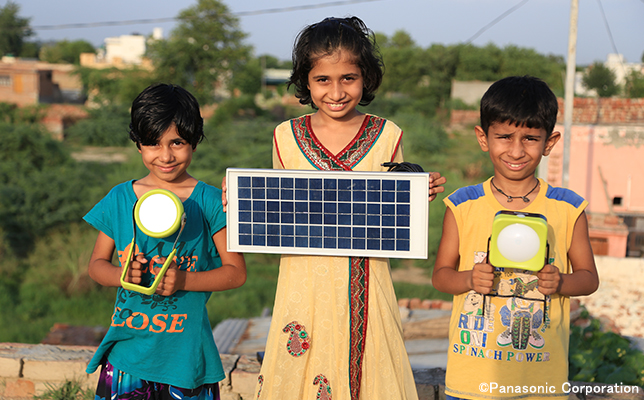
Solar LED light "SL4" (left) and "SL7" (right)
Above all, the SL7's best feature is its price. At 900 rupees (about 13 USD), the SL7 is about two-thirds the price of the SL4. This was made possible through dedicated efforts made to bring the price below 1,000 rupees--the target price range considered affordable for rural areas.
A lower price did not reduce performance. Although the light does not come with a mobile charger, it has retained durability, while waterproof functions and brightness are actually better than the SL4. We have also focused on portability, taking into account that farmers depend on light to drive away dangerous snakes and other animals that damage crops in the night.
The light was only launched recently, but we have already received positive user feedback like, "It's cheap but functional" and "It's so bright!"
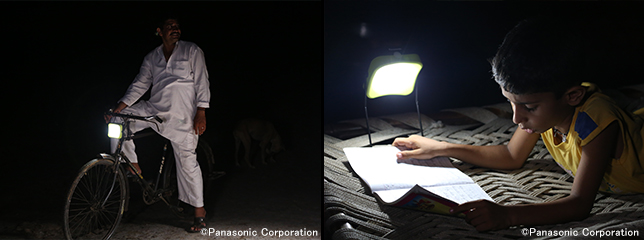
SL7 helping out in a variety of daily life scenes
Another product that has served the needs of those who want to light up the whole home is the newly developed "SHS10" photovoltaic system for homes. One SHS10 system equipped with three LED lamps can light up an entire home. The product is designed as a base system, with the battery connecting to LED light bulbs in different rooms via a cable.
At 6,000 rupees, the SHS10 system, geared toward households with a bigger budget, is more expensive than one solar LED light, but installment payments through micro-financing make it possible even for poor households to make the purchase. The system also comes with a new charging function for smart phones and tablet computers. We also expect that the system will be used in schools and public facilities, given the increase in tablets being used in education in recent years.
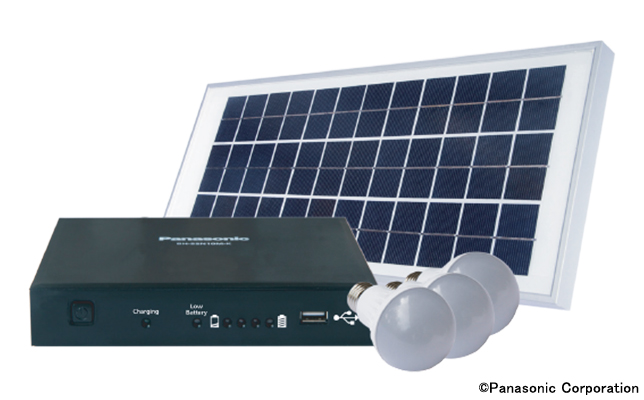
SHS10 photovoltaic system for homes
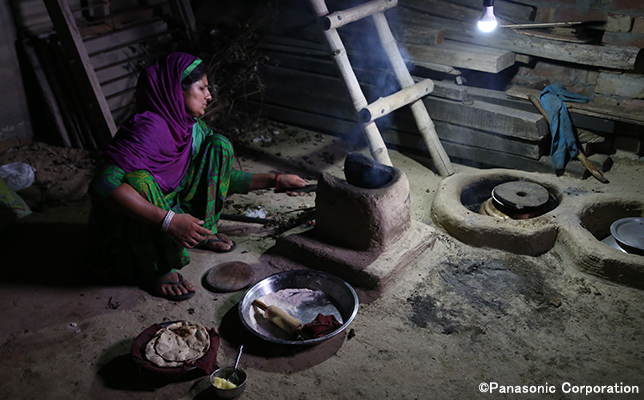
One system can light up an entire home
In delivering light to people, we partner with social enterprises that have networks in rural areas and address social issues through their business.
For example, in Maharashtra State, initiatives are being launched in collaboration with a government social enterprise named MAVIM. This organization promotes and supports women's advancement and employment, with 78,000 rural women participating in self-help groups. MAVIM works together with these women through picture story shows to raise awareness among the many people who do not realize the hazards of using kerosene lamps, while also increasing their income by selling solar LED lights. These activities launched in September are now spreading across the entire state.
Additionally, starting in late-December, we will begin sales of the LED lights through demonstrations at post offices. This collaboration with more than 150,000 post offices across India, everywhere from big cities to small villages, is bound to have a major impact in getting the lights to places we have not been able to reach until now.
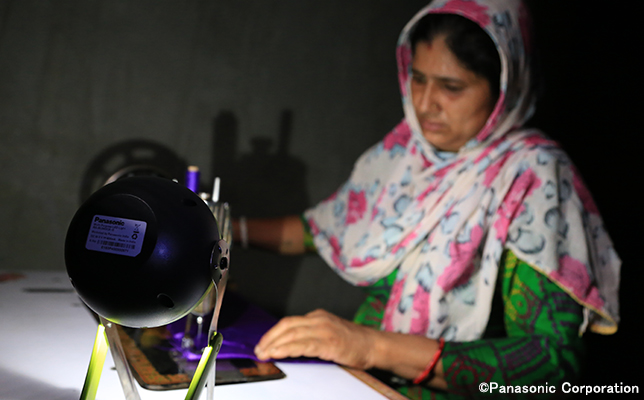
Solar LED light sheds the light of hope on women's futures
The areas without electricity in India have been shrinking in recent years thanks to government efforts. However, electrification has not necessarily improved everyone's lives. For example electricity does not yet reach every household, and power blackouts occur frequently. Meanwhile, mobile phone use has been increasing even in areas not served by electricity, and with the recent spread of low-priced smart phones, lifestyles are changing rapidly.
It is not enough that solar LED lights simply provide light. They need to be put to use in real life situations to truly improve people's lives. To that end, we will continue with a range of initiatives, including staying in tune with rapidly changing and diverse local conditions, reflecting our findings into product development, and making lantern donations to those in true need, through collaboration with external partners and the 100 Thousand Solar Lanterns Project.
Video introducing solar LED lights in India